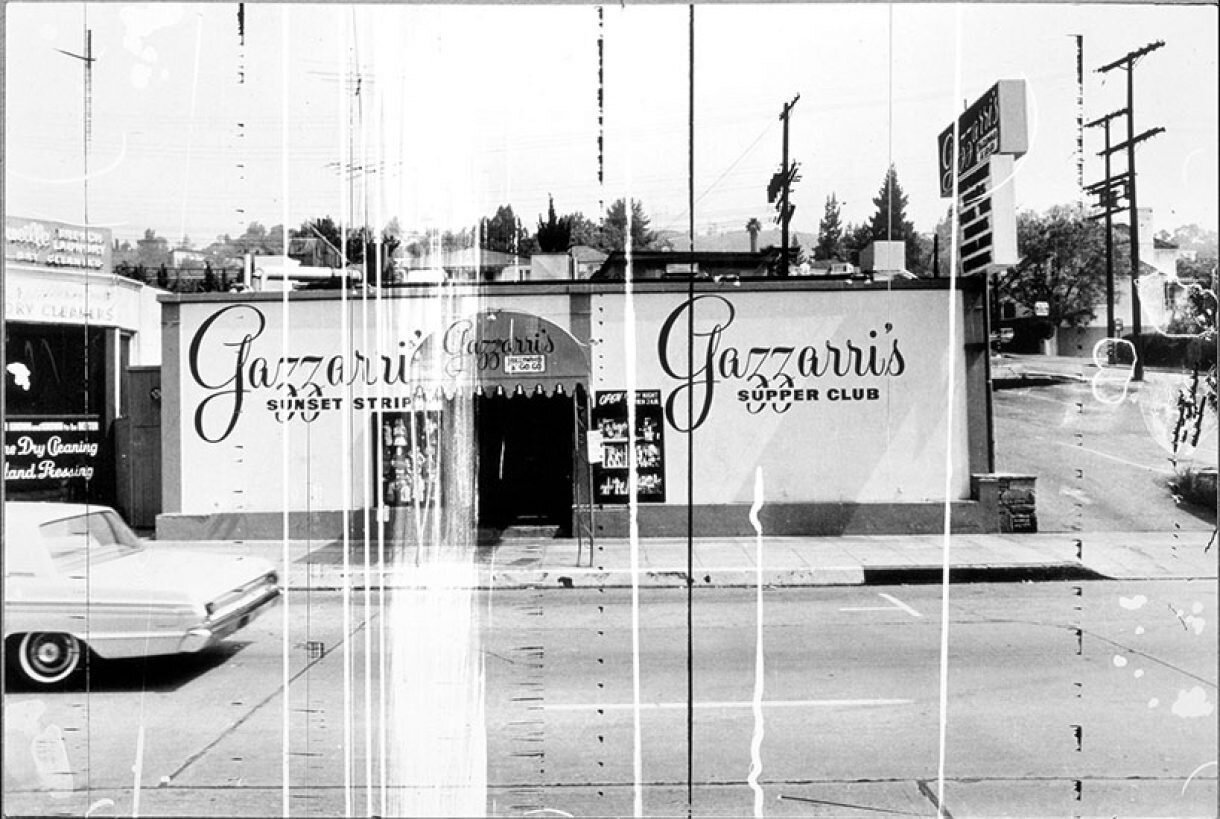ED RUSCHA
Ed Ruscha, Then & Now, 2005. Courtesy the artist and Peder Lund.
THEN AND NOW
Bjarne Bare interviewing Ed Ruscha.
Bjarne Bare It has been said that you brought the camera from the pedestrian level to the car, as a response to Americana and the car culture of the American West. Was this decision something you thought about in the beginning of your career, or did it happen as part of life in Los Angeles?
Ed Ruscha Taking photosnaps on the highways was my way of collecting information and bringing the news, if you could call it that, to the sparkly city of L.A.
BB At the same time, the idea of the photograph as a tool, rather than a medium was also an opposing force. For example, the book titled Thirtyfour Parking Lots in Los Angeles was published the same year as the legendary exhibition titled New Documents curated by John Szarkowski at MoMA (1967), an exhibition famous for introducing photography as an acknowledged art form in a modern art museum context. In your early books, the medium (photography) seems to be the interest, not the potential art form as such. Where did this fascination for the medium originate, and do you have this fascination still?
ER At first it was fun to see what could be done and to throw up the feathers and let them fall wherever they do. That type of action could work today and maybe does.
BB Your first book, Twentysix Gasoline Stations, was quite a remarkable statement regarding idea, format and medium. I read a statement by you in the book Ed Ruscha and Photography (Whitney, 2004) that said you would like to be the Henry Ford of book making. At that time, photographers were struggling for acceptance in the art world. One of the main outputs for fine-art photographers was the precious photo book. In Twentysix Gasoline Stations you went the opposite way, making an affordable book that was printed cheaply and made for a wide distribution. What sparked this idea?
ER It was coming from an innocent kid who thought he found water where there was none.
Ed Ruscha, The Sunset Strip (Gazzarri’s Supper Club), 1976. Courtesy the artist and Peder Lund.
BB In June 2011, founder of Self Publish Be Happy, Bruno Ceschel, mentioned in a panel discussion held at Printed Matter in NYC that Twentysix Gasoline Stations marked the beginning of the self-published photo book. The fact that you decided on the concept before the images were conceived and printing it on a high-speed offset press, kept a low selling price amongst other things. Now, fifty years later, these ideas are still provocative and new, and we have recently seen a big wave of self-published books as a response to the established publishers and probably the internet as well. What is your comment to the recent wave of self-published books in connection to the period in which you started publishing?
ER It has been long established that a publisher or editor stands between an Artist and a printed book. Why is there a need for this type of person? Why can’t an Artist create his own printed book? Also, how can you “edit” James Joyce or anything else?
BB You have said that making photo books without being a photographer was “media fucking” and that this inspired you. (Ed Ruscha and Photographs, Whitney 2004.) Still, your photographic projects stand out to me as pure photography without filters and in pursuit of a personal style. Was this one of the reasons your work was seen as conceptual rather than photographic?
ER At times, I have felt that the photos of gas stations were only an excuse to make a book and that a book in itself was king and all important in my art making.
BB How do you see the future of the medium, at what stage is photography today? Do you think it has evolved at all since the start of your career in the early sixties, besides its technical aspects?
ER There are as many kind of photographers as there are painters these days and plenty of really good ones. Photography, or the act of capturing images with some kind of device can’t logically end, as I see it, and surprising things will happen, wait and see.
BB Thirtyfour Parking Lots in Los Angeles (1967) was shot by a professional photographer from a helicopter, commissioned by you. In 2006 a German artist named Hermann Zschiegner published Thirtyfour Parking Lots on Google Earth simply by appropriating images of the same parking lots from Google Earth. Even the book cover is a low-resolution version of the cover of your book. Why do you think your early projects translate so well into new generations, and is it alright to be so directly appropriated?
ER I see the computer capture of my books as a logical exercise. My first reaction was one of amusement that someone would find the material worthy of a second look.
BB What sort of car did you drive when making 26 Gasoline Stations and what do you drive now?
ER Then: A 1950 Ford 4 – door Sedan. Today I drive a 2000 Lexus Sedan.
Ed Ruscha, Vacant Lots (1970-2003), Courtesy the artist and Peder Lund.
This conversation was published in Objektiv #6, 2012.


